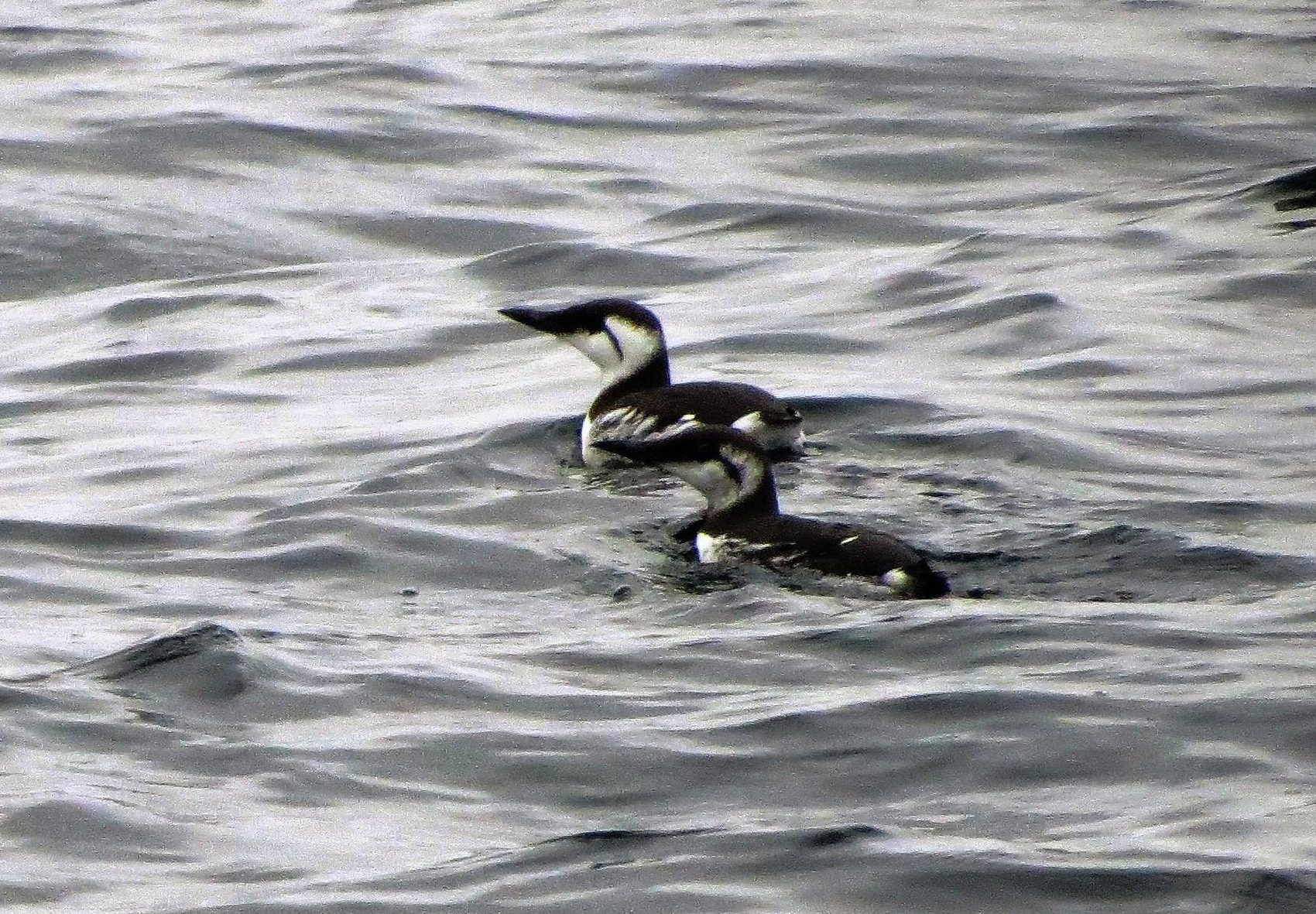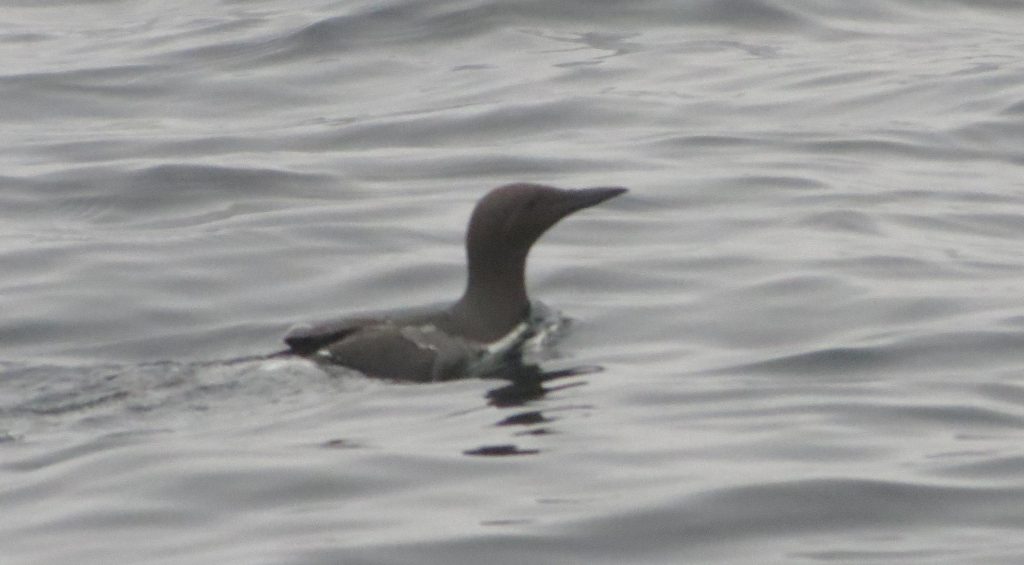
There are two species of murre, the Common Murre, and the Thick-Billed Murre. They and their close relatives, the razorbills, dovekies, guillemots, and puffins are all members of a group of black and white seabirds called auks.
The two species look much alike. In summer, they are black on the back, neck, and upper breast, and they are glossy white below, they look as if they are wearing elegant dinner jackets. In winter, the throat, cheeks, and upper breast turn white. In summer, the Common Murre’s chocolate-coloured back is lighter than the Thick-billed Murres’ darker and shinier feathers. During winter, the Common Murre shows a white streak behind the eye.

Both species have sharp, dagger-like bills that are somewhat flattened from side to side; however, as the name suggests, the Thick-Billed Murres beak is shorter and stouter than the Common Murres. The beak is black, and in summer the two species can be told apart by a white line along the cutting edge of the top half of the Thick-billed Murres beak. These seabirds are found year-round off the Pacific coast of Canada and all the outer islands.
Because their tails are very short, Murres use their feet as rudders for flying, spreading them apart for quick maneuvers. Murres cannot turn sharply and may have difficulty landing at their rocky breeding colonies on stormy days. Murres are awkward on land because their feet are placed far back on their bodies like the loons. They either shuffle along slowly on their haunches or patter erratically with wings flapping wildly.
However, the Common Murre do not rely heavily on flying and walking, because they spend eight or nine months of the year continuously at sea, coming ashore only to breed.

Unlike many ducks, which propel themselves underwater with their feet, Murres dive by swimming with half-open wings, as if flying underwater. Their wings have to be relatively short to do this because water has much more resistance than air and takes much more effort to move through. Murres can remain submerged for several minutes at a time. Depths of 100 m appear to be common.
Some Thick-billed Murres breed in small numbers among common murres on the Pacific coast, but most breed in the arctic regions of northern Canada and Alaska.
Murres only begin to breed successfully at about five years of age and generally lay one egg each breeding season. No nest is constructed, and the egg is laid directly on the rocky ledge. The egg is relatively large, weighing about 100 g, and is incubated continuously by one of the parents. They take equal turns of one or two days sitting while the other parent is feeding at sea.
The chick hatches in about a month and is covered with an insulating coat of downy feathers. The parents continue to brood the chick to keep it warm as long as it stays at the colony. One parent always stays with the chick while the other brings it food.

At three weeks, the chicks leave the colony with the male parent. In colonies on high cliffs, the chick jumps from the nest ledge and glides down to the sea, closely followed by its parent. They set out on the chick’s first foray from the breeding colony just at dusk, so that by dawn they can be as far as possible from the colony, where the chick could be eaten by various predators. They then begin their migration together. The female leaves the colony alone soon afterward. The chick stays with the adult male until it is able to fly and feed itself.